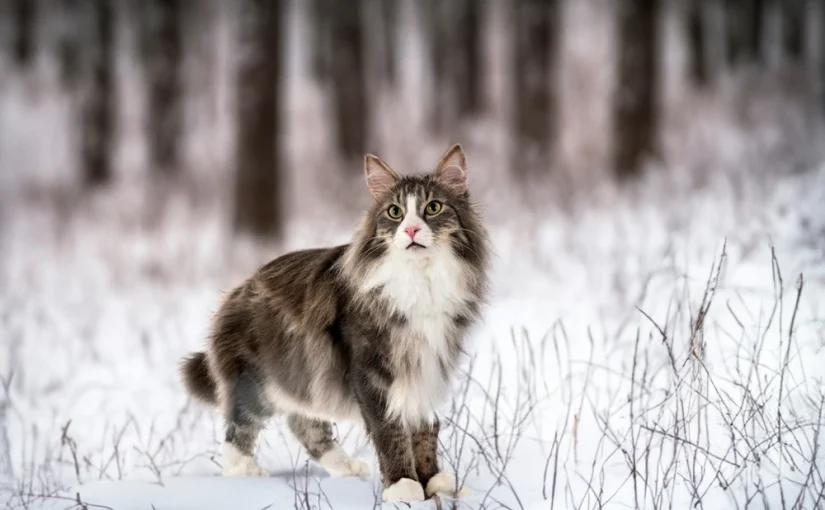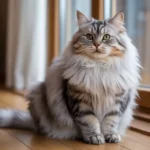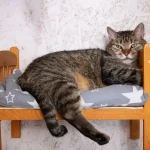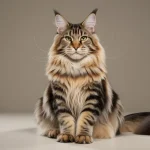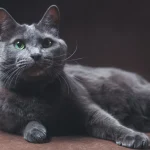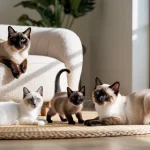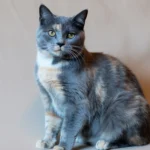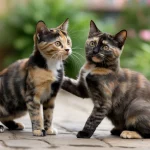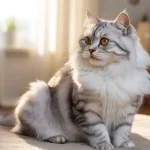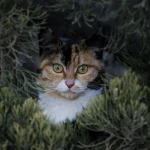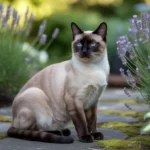The Norwegian Forest Cat is a striking feline with a strong build, a thick coat, and a calm temperament. Originating from the forests of Northern Europe, this breed is known for its resilience and quiet charm. While they may appear wild at first glance, these cats are affectionate and loyal, making them a wonderful addition to many types of homes.
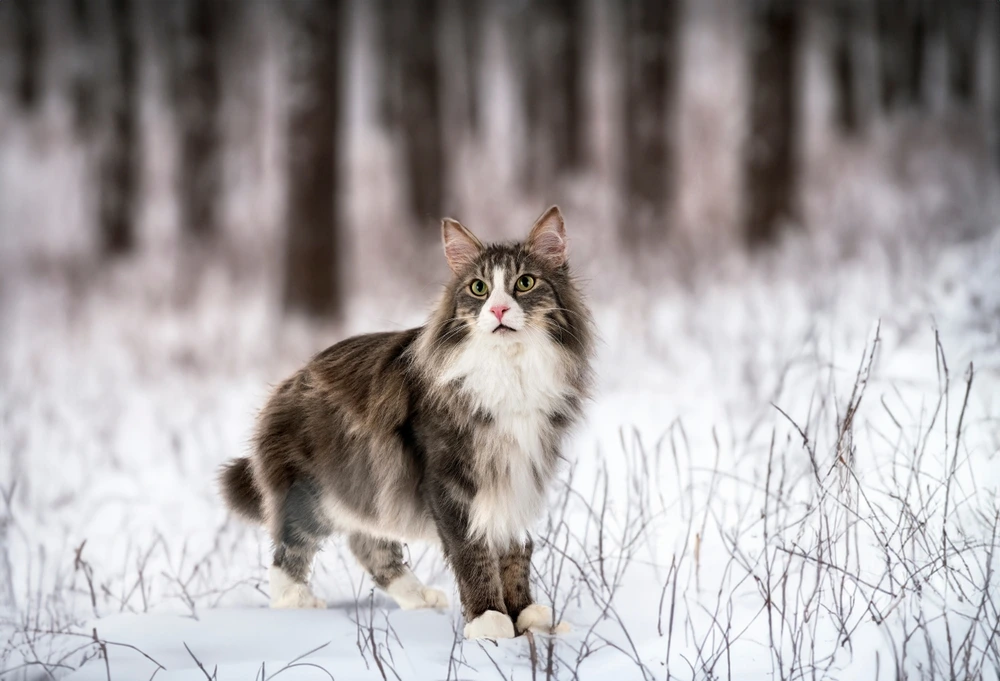
Content
A Glimpse Into Their Nature
These cats are independent by nature but enjoy the company of their human companions. They’re observant, intelligent, and often perch on high spots to survey their surroundings. While they’re not known for constant cuddling, many form deep bonds with their families and enjoy gentle affection on their own terms.
With a soft voice and calm demeanor, they tend to keep a low profile, which can be a refreshing trait for anyone looking for a quiet, low-drama pet.
Health and Longevity
With proper care, these cats typically live between 14 and 16 years. As with many pedigreed breeds, they can be predisposed to some hereditary health conditions. Among these are a heart condition known as hypertrophic cardiomyopathy and a rare metabolic issue called glycogen storage disease type IV.
To ensure a long and healthy life, regular checkups, a nutritious diet, and opportunities for play and exercise are essential. Early detection of potential issues can make a significant difference in treatment outcomes.
Feeding and Nutrition
A balanced, protein-rich diet is important for maintaining their health and energy. High-quality commercial cat food that lists real meat as the primary ingredient is a good choice. Because of their size and strong build, it can be tempting to overfeed, but it’s best to follow a vet-recommended feeding plan.
Always provide access to clean water, and monitor your cat’s weight and eating habits. Changes in appetite or sudden weight gain should be addressed with a veterinarian.
Temperament and Daily Behavior
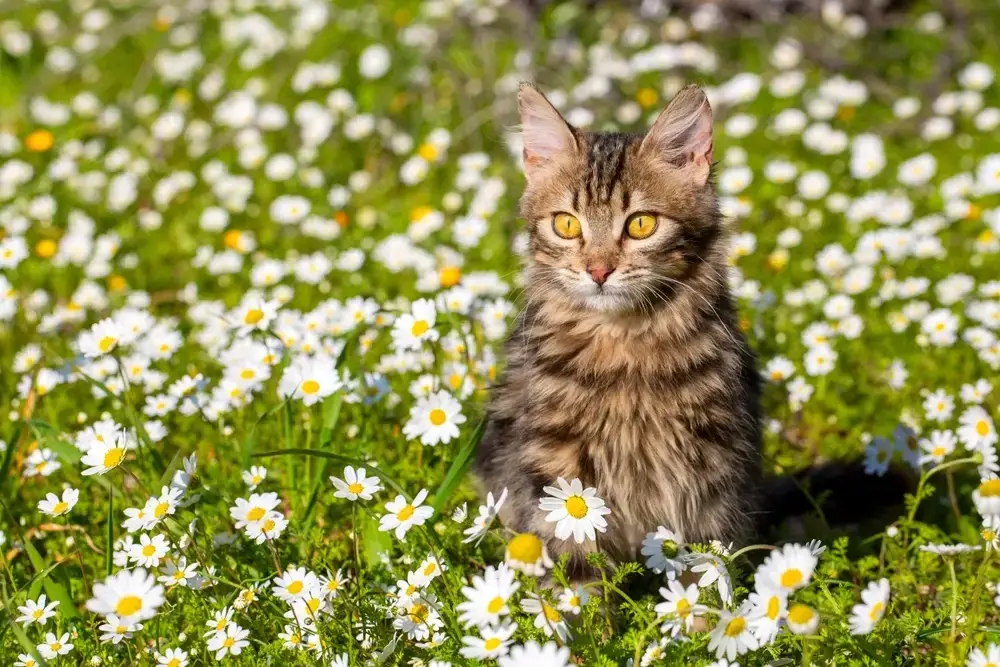
You’ll find that the Norwegian Forest Cat has a laid-back personality. They’re not clingy or demanding, but they do appreciate being part of the household action. They may follow you from room to room or settle nearby, content to simply be in your presence.
While playful, they aren’t hyperactive. They enjoy interactive toys, puzzle feeders, and climbing furniture. Their hunting instincts make them fans of toys that mimic prey.
This temperament makes them ideal for families, individuals, and even homes with other pets—provided proper introductions are made.
Coat Care and Grooming
Their dense, water-resistant coat was built for survival in colder climates. Despite its length, their fur doesn’t mat easily, but regular brushing—once or twice a week—helps reduce shedding and keep their coat in good condition.
More frequent grooming may be needed during seasonal shedding. Other basic care routines like nail trimming, ear cleaning, and dental hygiene should also be maintained to keep them in top shape.
Color Variations and Appearance
Norwegian Forest Cats come in a wide array of colors and patterns. Some of the most admired variations include those with solid white coats or deep black fur. The white-coated cats often have bright eyes that add to their regal appearance, while the black variety gives off a mysterious, elegant vibe.
You can also find them in tabby, cream, red, gray, and bi-color combinations. Regardless of the coat color, their large size, tufted ears, and full tails give them a wild and majestic look.
Norwegian Forest Cat vs Maine Coon
It’s easy to confuse this breed with the Maine Coon, as both are large, long-haired cats with affectionate personalities. However, there are notable differences.
The Maine Coon tends to be more social and outgoing, often described as dog-like. In contrast, the Norwegian Forest Cat is more reserved and observant. Physically, Maine Coons have broader faces and silkier coats, while the Norwegian breed has a more triangular head and woollier, water-resistant fur.
Choosing between the two depends on the kind of personality and interaction you’re looking for in a feline companion.
Things to Consider Before Adopting
These cats do well indoors, especially when provided with vertical space like cat trees or shelves. While they can adapt to small apartments, they do appreciate having areas to explore and climb.
They’re generally easygoing, but due to their thick coat and moderate activity levels, they require routine grooming and engagement. Prospective pet parents should be ready to meet these needs.
This breed is a good choice for those who want a quiet, loving pet without the constant need for attention. They’re loyal and steady companions, particularly suited for calm households.
Final Thought
Elegant, intelligent, and independent, the Norwegian Forest Cat is a breed that brings both beauty and calm to the home. With the right environment and care, they thrive as loyal companions who quietly weave themselves into the lives of those they trust. If you’re looking for a peaceful feline with a rich history and stunning presence, this might just be the cat for you.
Curious about how long large dog breeds live? Learn more in our detailed guide on Rottweiler Lifespan.
FAQs
Which is larger, a Maine Coon or a Norwegian Forest Cat?
Maine Coons are generally larger, both in weight and length, than Norwegian Forest Cats.
Can you get a Norwegian Forest Cat in the US?
Yes, Norwegian Forest Cats are available in the US through breeders and rescue organizations.
What are the disadvantages of a Norwegian Forest Cat?
They require regular grooming and mental stimulation, and their shedding may not suit allergy-prone homes.
Are Norwegian Forest Cats cuddly?
They enjoy close companionship but aren’t overly clingy—affectionate on their own terms.

Meet Max, the dog’s best friend. He’s a pup-loving pro, sharing tips on training, grooming, and adventures with our four-legged companions.
